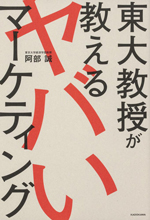Why is the menu at McDonald’s so difficult to read?

An introduction to academia starting with “Why?”
After making a list of questions which would pique anyone’s interest, we asked faculty members on campus who might be knowledgeable in these areas to answer them from the perspective of their respective expertise. Let’s take a look into the world of research through questions that you feel you know something about, but cannot answer definitively when actually asked.
Q14. Why is the menu at McDonald’s so difficult to read?
Many fast food restaurants, not only McDonald’s, have menus at the counter that customers find difficult to read. Is there some reason for this?Fast food restaurants understand how customers make decisions
The displays at McDonald’s show large photographs of promoted products and combo meals, but don’t usually show lower-priced options such as single items or those in the 100-yen range. Full printed menus are available on the counter, so if you want to select something that’s not shown on the display, you have to rush to find it once it’s your turn to order. When there’s a long line behind them, many people feel pressured to make their selections quickly and end up ordering a combo meal anyway.
| Heuristic Processing | Systematic Processing |
|---|---|
| Experiential | Rational |
| Intuitive | Deductive |
| Peripheral route | Central route |
| Fast | Slow |
| Parallel | Consecutive |
| Automatic | Controlled |
| No effort required | Effort required |
| Associative | Theoretical |
| Emotional | Logical |
When people feel pressured to make a decision in a hurry, they pursue a simplified method of decision-making known as heuristic processing, which involves identifying an approximate answer quickly and intuitively. This term was originally used in computer programming, in contrast to systematic processing, in which time is taken to conduct analysis that will identify the optimal answer. When we use heuristics, we quickly select a combo meal that would likely serve our needs better, rather than carefully deliberating over all the options. Usually this approach delivers a reasonably satisfying outcome, but in some situations it can lead to errors (bias). Businesses are very familiar with these patterns of bias and use the principles of consumer behavior to entice consumers. Having customers select higher-priced combo meals rather than cheap individual items helps to boost profits.
The study of economics is predicated on the notion of homo economicus: the human that makes decisions with an emphasis on economic rationality. When we purchase shampoo, for example, economic rationality would prompt us to consider all the products available carefully before making a decision. In practice, however, most of us select from a small number of products that we’re already familiar with. There’s a gap between the theory and the reality. The field of behavioral economics was developed in the 1980s as a way of capturing the reality more effectively and accounting for actual human behavior, combining insights from psychology and economics.
My research in this field focuses on “preference reversal.” The way people construe and evaluate things in order to form preferences varies depending on the context, situation and distance from the subject, according to what is known in psychology as construal level theory. By connecting this theory with the concept of “discounts” in behavioral economics, I’m seeking to express the phenomenon of preference reversal using statistical modeling, and to predict the degree of discount that results from it.
As consumers, it’s very important to be aware of the possibility that we may make irrational judgments. The asymmetry of information between vendor and purchaser sometimes places the purchaser at a disadvantage. I want people to understand the underlying principles so they can avoid making unwanted purchases.

Todai Kyoju ga Oshieru Yabai Maketingu (“UTokyo Professor’s Guide to Dangerous Marketing”) (Kadokawa, 2019)
Based on actual classes offered in the Faculty of Economics, this book explains numerous marketing theories in terms of behavioral psychology and cognitive psychology.
* This article was originally printed in Tansei 45 (Japanese language only). All information in this article is as of September 2022.



 Answered by Makoto Abe
Answered by Makoto Abe 


